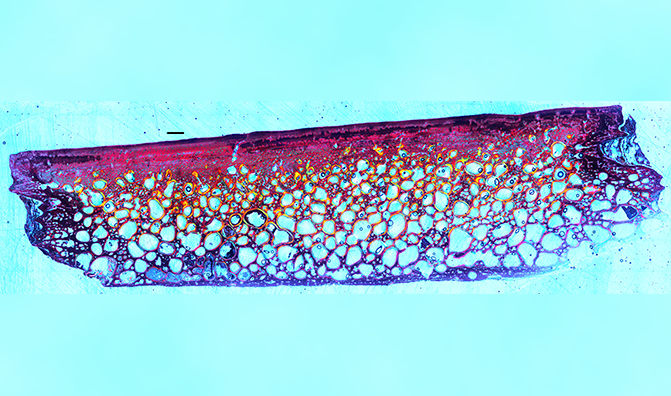
Brent Adrian, Heather F. Smith, Avery Williams, Aryeh Grossman, & Andrew Lee, Midwestern University; Christopher Noto, University of Wisconsin-Parkside
Paleohistological thin section from a 96 million year old fossil pond turtle shell. Polarized light reveals changes in orientation patterns of collagen fibers in the bone interior. Also, vascular channels and growth marks are visible.
Named a FASEB BioArt Winner, December 2019.